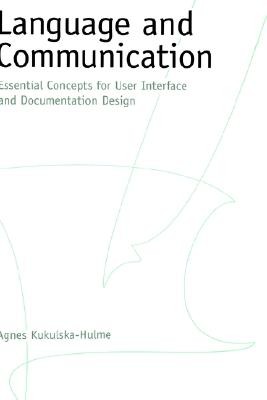| Language and Communication Contributor(s): Kukulska-Hulme, Agnes (Author) |
|
 |
ISBN: 0195108388 ISBN-13: 9780195108385 Publisher: Oxford University Press, USA OUR PRICE: $301.95 Product Type: Hardcover Published: April 1999 Annotation: Computer interfaces and documentation are notoriously difficult for any user, regardless of his or her level of experience. Advances in technology are not making applications more friendly. Introducing concepts from linguistics and language teaching, Language and Communication proposes a new approach to computer interface design. The book explains for the first time why the much hyped user-friendly interface is treated with such derision by the user community. The author argues that software and hardware designers should consider such fundamental language concepts as meaning, context, function, variety, and equivalence. She goes on to show how imagining an interface as a new language can be an invaluable design exercise, calling into question deeply held beliefs and assumptions about what users will or will not understand. Written for a wide range of computer scientists and professionals, and presuming no prior knowledge of language-related terminology, this volume is a key step in the on-going information revolution. |
| Additional Information |
| BISAC Categories: - Computers | Software Development & Engineering - General - Computers | User Interfaces - Language Arts & Disciplines | Linguistics - General |
| Dewey: 005.437 |
| LCCN: 97-41640 |
| Physical Information: 0.61" H x 6.28" W x 9.72" (0.98 lbs) 176 pages |
| Descriptions, Reviews, Etc. |
| Publisher Description: Computer interfaces and documentation are notoriously difficult for any user, regardless of his or her level of experience. Advances in technology are not making applications more friendly. Introducing concepts from linguistics and language teaching, Language and Communication proposes a new approach to computer interface design. The book explains for the first time why the much hyped user-friendly interface is treated with such derision by the user community. The author argues that software and hardware designers should consider such fundamental language concepts as meaning, context, function, variety, and equivalence. She goes on to show how imagining an interface as a new language can be an invaluable design exercise, calling into question deeply held beliefs and assumptions about what users will or will not understand. Written for a wide range of computer scientists and professionals, and presuming no prior knowledge of language-related terminology, this volume is a key step in the on-going information revolution. |